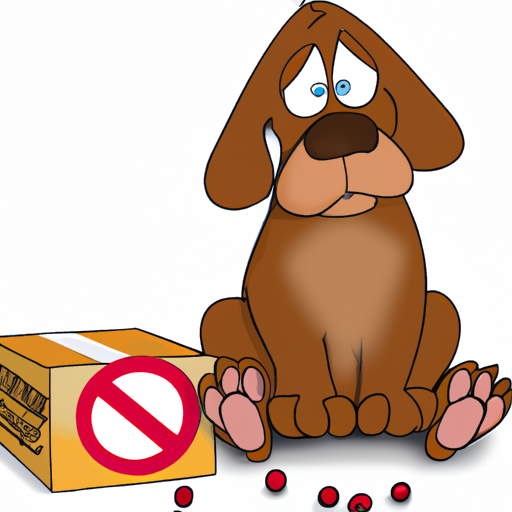Introduction
You, as a loving caregiver to your furry friend, are always on the lookout for what’s best for them. One question that might have crossed your mind is: “Why can’t dogs eat chocolate?” It’s a common question, given that chocolate is a delightful treat for us humans. However, when it comes to our canine companions, it’s a whole different story.
The Science Behind the Chocolate and Dogs Dilemma
First, let’s delve into the science behind the issue. Chocolate contains two harmful substances for dogs: theobromine and caffeine. Both are types of stimulants that affect the central nervous system and heart muscles.
| Chemicals in Chocolate | Effect on Dogs |
|---|---|
| Theobromine | Causes vomiting, diarrhea, irregular heartbeat, seizures, and potentially, death |
| Caffeine | Increases heart rate, causes trembling, restlessness, and increased urination |
While humans can easily metabolize these substances, dogs process them much more slowly, leading to a build-up to toxic levels in their system.
The Severity of Chocolate Poisoning in Dogs
The severity of chocolate poisoning in dogs depends on various factors:
-
Type of Chocolate: Dark chocolate and unsweetened baking chocolate have higher levels of theobromine and caffeine, making them more dangerous.
-
Size of Dog: Smaller dogs are more susceptible to chocolate poisoning because they can’t metabolize the toxins as efficiently as larger dogs.
-
Amount of Chocolate Consumed: The more chocolate your dog eats, the higher the risk of poisoning.
What to Do if Your Dog Eats Chocolate
If your dog manages to sneak a piece of chocolate, don’t panic. Here’s what you should do:
- Estimate the amount of chocolate your dog has consumed.
- Assess the type of chocolate they’ve eaten.
- Contact your vet immediately.
Remember, it’s always better to be safe than sorry. Even if your dog shows no symptoms, contact your vet as symptoms can take several hours to appear.
Prevention is Better than Cure
As a responsible dog owner, the best thing you can do is prevent your dog from accessing chocolate in the first place. Keep chocolate stored in places your dog can’t reach. Inform your family members, especially children, about the dangers of feeding chocolate to dogs.
Frequently Asked Questions
Q: Can dogs eat white chocolate?
A: While white chocolate contains lower levels of theobromine, it’s still not recommended for dogs due to its high sugar and fat content.
Q: How much chocolate is poisonous to dogs?
A: Even a small amount can be harmful. Always consult your vet if your dog has ingested chocolate.
Q: What are the symptoms of chocolate poisoning?
A: Symptoms include vomiting, diarrhea, rapid breathing, seizures, and increased heart rate.
Remember, as a caregiver, your vigilance is your dog’s best defense against the dangers of eating chocolate. When it comes to our furry friends, it’s always best to err on the side of caution.



